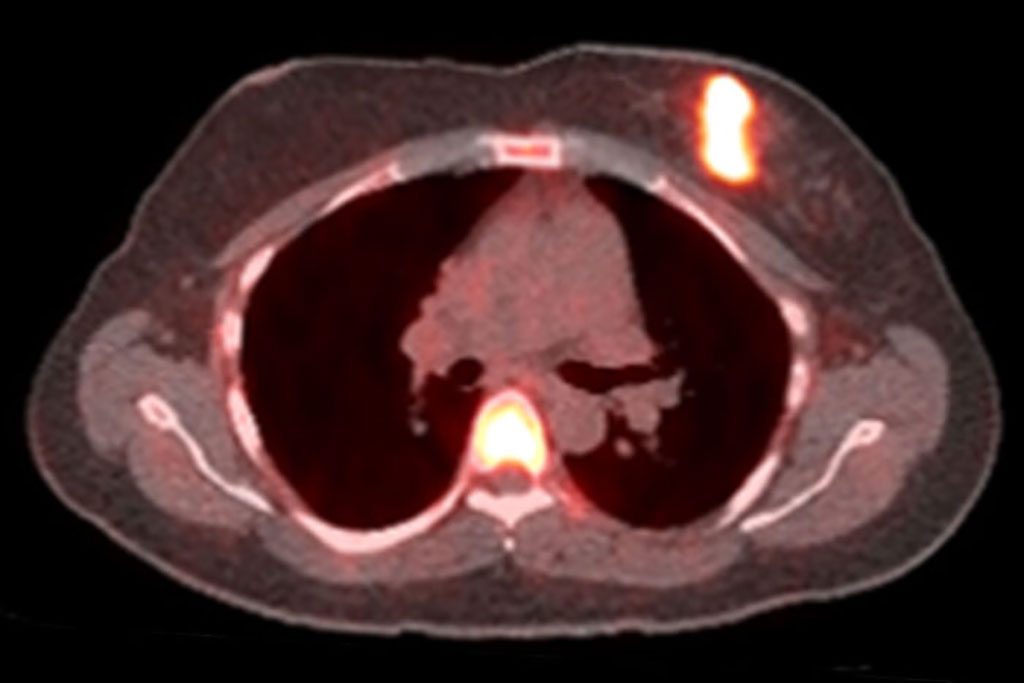PET-Based Test Predicts Hormone Therapy Response
By MedImaging International staff writers
Posted on 24 Feb 2021
A positron emission tomography (PET)-based imaging approach can distinguish breast cancer patients unlikely to benefit from hormone therapy (HT), claims a new study. Posted on 24 Feb 2021
Researchers at the Washington University (WUSTL; St. Louis, MO, USA) School of Medicine and the University of Illinois at Urbana-Champaign (UIUC; USA) hypothesized that an estradiol challenge would increase progesterone receptor (PgR) levels only in estrogen receptor (ER) positive tumors. To test this hypothesis, they conducted a trial in 43 postmenopausal women with advanced ER+ breast cancer of the uptake of 21-[18F]fluorofuranylnorprogesterone (FFNP, a progestin analog), before and after a one-day estradiol challenge.

Image: Bright spots on PET indicate cancer cells responding to a one-day estrogen challenge (Photo courtesy of Farrokh Dehdashti/ WUSTL)
The results showed 100% sensitivity and specificity to the estradiol challenge. Post-challenge increase in tumor FFNP uptake was seen in the 28 women with clinical benefit from HT (the responders), but not in the 15 others without clinical benefit (non-responders), indicating that change in tumor FFNP uptake can predict the response to HT in women with ER+ breast cancer. Six-month results also showed significantly longer survival rates in the responding subjects. The study was published on February 2, 2021, in Nature Communications.
“If breast cancer in a patient is estrogen receptor-positive, doctors will usually recommend hormone therapy, even though they know it will only work for slightly more than half the patients,” said senior author Professor Farrokh Dehdashti, MD, of WUSTL. “We observed 100% agreement between the response to estrogen challenge and the response to hormone therapy, even though the participants were on a variety of treatment regimens. This method could provide valuable information to oncologists deciding how best to treat their patients.”
PET is a nuclear medicine imaging technique that produces a 3D image of functional processes in the body. The system detects pairs of gamma rays emitted indirectly by a positron-emitting radionuclide tracer, such as FFNP. Tracer concentrations within the body are then constructed in 3D by computer analysis.
Related Links:
Washington University
School of Medicine and the University of Illinois at Urbana-Champaign














